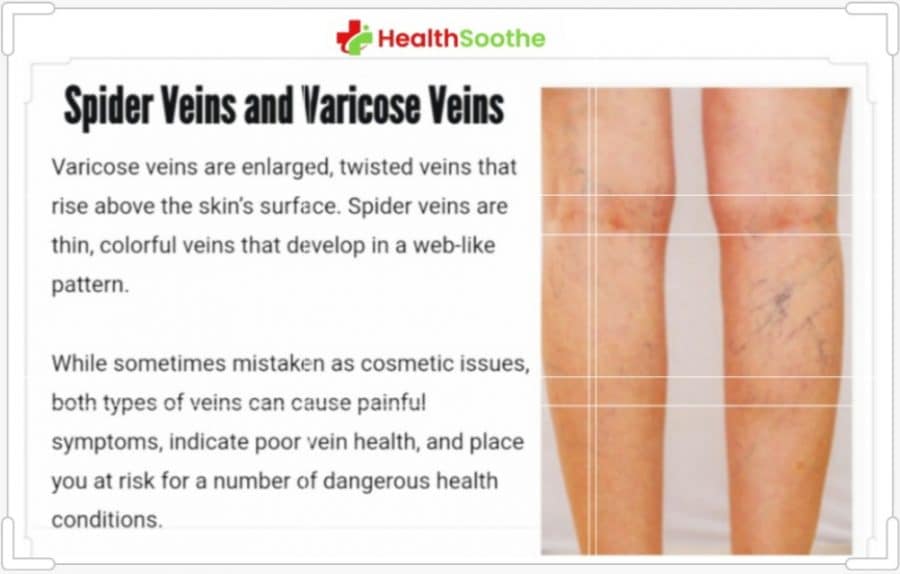Spider veins are not harmful. However, they can be annoying. They take the form of fine red, blue, or purple web-like lines that tend to pop up on your legs or your face. When they appear on the legs, they may hinder you from wearing short clothes. On the other hand, some people cover them with makeup when they appear on the face.
Luckily, with the current innovations in the cosmetic and vascular industry, it has become easier than ever to eliminate spider veins in 2025. We are going to analyze the three best spider vein treatment options: laser treatment, sclerotherapy, and radiofrequency ablation. Each has its own area of strength, and one can be ideal depending on the requirements.
Sclerotherapy: The gold standard of treating spider veins in the legs
Sclerotherapy is still the most preferred and effective spider veins treatment Richmond, VA. The treatment deserves its status and rightly so.
Here is how it works
A skilled practitioner injects a substance called a sclerosant straight into the spider veins. This solution inflames the wall of blood vessels, making them fold and adhere. The body reabsorbs the veins over time, and they are lost to sight.
What can you expect? The operation is comparatively fast: usually less than 30 minutes, and does not need anesthesia. Probably you will experience a little prick with every injection, though it is usually tolerated. A few days after treatment, you will have to wear some compression socks to aid the healing.
It is best for:
- Bigger or more conspicuous spider veins (on legs in particular)
- Individuals who are seeking high success rates
- Low maintenance but long-term outcomes.
Pros
- Very effective
- Minimally invasive
- May treat several veins at once.
Cons
- In some instances, there is mild bruising or itching at the area of injection. However, these effects are normally minimal.
- You may require 2-3 sessions, some weeks apart, depending on the number of veins you are treating.
Today, the procedure is even more efficient with newer foam-based sclerosants that enable the medication to cover even larger surface areas with fewer injections.
Laser Therapy: An accurate and non-invasive treatment
Laser therapy could be your best option if you need a painless treatment option that does not require needles or injections.
Here is how it works
Spider veins laser therapy involves directing laser light on the blood vessels beneath your skin to heat them up and collapse. When the veins are treated, they are then reabsorbed by your body in the weeks that follow.
What can you expect? You will probably experience a warm, tingling sensation, and most individuals report that it is quite tolerable. In particular, modern lasers are milder and more effective than they were a few years ago.
It is best for:
- Small, smoother spider veins, particularly on the face
- Individuals who desire a needle-free choice
- Those who are unable to get off work to recover.
Pros
- No needles or recovery period
- Non-invasive
- Short term (session takes 15-30 minutes)
Cons
- You may need several sessions. This is necessary when the veins are stubborn or widespread.
- Light redness or swelling is possible. However, it should subside after one or two days.
Currently, this treatment is even more comfortable as advanced cooling technologies have been developed. It is frequently recommended as an early defense against facial spider veins.
Radiofrequency Ablation (RFA): High tech with long-lasting results
Radiofrequency ablation (RFA) has long been linked to larger varicose veins. But recently, doctors have begun using this method with great success on spider veins as well, particularly those that have an underlying venous problem causing the condition.
Here is how it works
RFA involves the use of thermal (heat) energy and is discharged using a small catheter inserted into the vein. The heat blocks the blood in the vein and redirects it into other healthy veins, thus halting the flow in the broken vessel.
What can you expect? This is an ultrasound-guided procedure done under local anesthesia. It probably will take you an hour to go in and out of the office. The pain is minimal due to the local anesthesia used.
It is best for:
- Individuals who have a poor venous drainage problem
- Spider veins that have been resistant to other therapies
- Combined therapy with sclerotherapy.
Pros
- Addresses the underlying cause of vascular problems
- Long-lasting results
- Minimal downtime.
Cons
RFA costs more than sclerotherapy or laser therapy and is typically used on more complex or reluctant cases. Nevertheless, insurance covers it in the event of a medical cause, such as a chronic vein disease.
Recently, this treatment has become safer and more precise for use on small veins. This is because imaging tools have improved, and the National Vascular Associates now use thinner, flexible catheters.
Parting shot
Annoyed by those unwanted webs all the time? At last, you can bid them farewell with modern technology and professional treatment. Your ideal spider vein treatment depends on the number, the location of the vein, symptoms, and preference. The best option is to chat with a vein expert or dermatologist and get a personalized plan.

Isreal olabanji a dental assistant and public health professionals and has years of experience in assisting the dentist with all sorts of dental issues.
We regularly post timely and trustworthy medical information and news on Fitness, Dental care, Recipes, Child health, obstetrics, and more.


